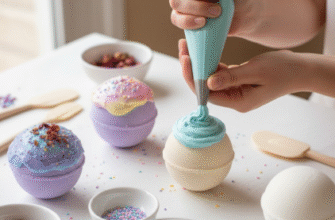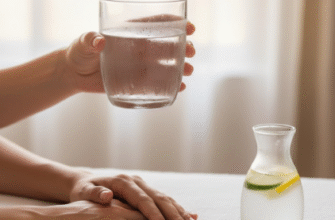Making your own skincare products at home holds a certain appeal. It feels empowering, potentially more economical, and allows for complete control over the ingredients touching your skin. From simple sugar scrubs to more complex lotions and serums, the world of DIY skincare is vast and exciting. However, amidst the enthusiasm for natural ingredients and custom blends, a crucial aspect is often misunderstood or entirely overlooked: preservation. Failing to understand when and how to preserve your homemade creations isn’t just about preventing waste; it’s a matter of safety.
Why Preservation is Non-Negotiable (Usually)
Think about food left out on the counter. What happens? Eventually, it spoils. Bacteria, yeasts, and molds find it a welcoming environment, especially if it contains water. Your beautiful handmade lotion or facial mist is no different. The primary culprit? Water.
Any product that contains water (or water-based ingredients like hydrosols, aloe vera juice, herbal infusions, or teas) creates an environment where microorganisms can thrive. These microbes are everywhere – in the air, on our skin, on equipment, and even within some raw ingredients. Without a system to keep them in check, they will multiply rapidly, turning your lovely skincare product into a potentially harmful microbial soup long before you might see visible signs of spoilage like mold or a change in smell or texture.
Using contaminated skincare can lead to skin irritation, infections, breakouts, and other unpleasant reactions. What you intended as beneficial self-care can inadvertently become detrimental.
Water-Free vs. Water-Containing Products
Understanding whether your product needs a preservative starts with identifying if it contains water. This is the fundamental dividing line:
- Anhydrous Products (Water-Free): These typically do not require a broad-spectrum preservative. Examples include oil blends, body butters made purely from oils and butters, balms using waxes, and powder-based products like clay masks (mixed with liquid just before use). While they don’t support microbial growth in the same way water-based products do, oils can go rancid (oxidize). Antioxidants like Vitamin E or Rosemary Oleoresin Extract can help slow down oxidation, extending the shelf life in terms of freshness, but they are not preservatives and won’t stop bacteria or mold if water is accidentally introduced (e.g., dipping wet fingers into a jar).
- Hydrous Products (Water-Containing): These absolutely require a broad-spectrum preservative system. This category includes lotions, creams, serums, toners, facial mists, shampoos, conditioners, gels, and any product where water, hydrosol, aloe vera juice, tea, or similar aqueous ingredients are present. Even products that seem thick, like a cream, often contain a significant percentage of water.
Critical Safety Note: Any homemade skincare product containing water or water-based ingredients MUST include an effective broad-spectrum preservative system. Relying on refrigeration, antioxidants like Vitamin E, or anecdotal “natural preservatives” like grapefruit seed extract is insufficient and unsafe. Microbial contamination can occur long before it’s visible or detectable by smell.
Demystifying Preservatives
The term “preservative” can sometimes evoke negative connotations, often linked to processed foods or concerns about harsh chemicals. However, in the context of water-containing skincare, preservatives are essential safety ingredients. They work by inhibiting or destroying microorganisms like bacteria, yeast, and mold, preventing them from growing in your product.
A broad-spectrum preservative is crucial because it offers protection against a wide range of these potential contaminants. Some preservatives are more effective against bacteria, while others excel against fungi (yeast and mold). A good system covers all bases.
Common Misconceptions
The desire for “natural” skincare often leads DIYers down risky paths regarding preservation. It’s vital to separate fact from fiction:
- Vitamin E: As mentioned earlier, Vitamin E is an antioxidant. It helps prevent oils from going rancid (oxidizing) but has virtually no power against bacteria, yeast, or mold. It cannot preserve a water-containing product.
- Grapefruit Seed Extract (GSE): Often touted as a natural preservative, genuine GSE has shown very weak antimicrobial activity in studies. Furthermore, much of the commercially available GSE has been found to be contaminated with synthetic preservatives, which are responsible for any preserving action observed. Relying on GSE alone is inadequate and potentially misleading.
- Essential Oils: While some essential oils possess antimicrobial properties (like tea tree or lavender), the concentration needed to effectively preserve a product would typically be irritatingly high and could alter the product’s scent and texture undesirably. They cannot be relied upon as the sole preservative system.
- Refrigeration: Storing a water-based product in the fridge slows down microbial growth but does not stop it entirely. It might buy you a little extra time, but it’s not a substitute for a proper preservative. Contamination can still occur each time you open and use the product.
Understanding Your Preservation Needs
Choosing and using a preservative correctly is key. It’s not just about adding a random amount of something labelled “preservative.” Factors to consider include:
- pH Level: Most preservatives are only effective within a specific pH range. You need to know the approximate pH of your finished product and choose a preservative compatible with that range. This might involve testing and adjusting the pH of your creation.
- Ingredient Compatibility: Some preservatives can interact negatively with other ingredients in your formula, potentially becoming deactivated or causing unwanted changes in texture or appearance. Research compatibility before finalising your recipe.
- Type of Product: Is it a leave-on product (lotion, serum) or a rinse-off product (cleanser, shampoo)? This can influence the choice and usage rate of the preservative.
- Supplier Recommendations: Always purchase preservatives from reputable cosmetic ingredient suppliers. They will provide crucial information about the specific preservative, including its effective pH range, recommended usage rate (usually a small percentage of the total formula), and how to incorporate it properly (e.g., adding it during the cool-down phase of lotion making). Never exceed the recommended usage rate, as this can cause skin irritation.
Embracing Safe DIY Skincare
Making your own skincare can be a wonderfully creative and rewarding hobby. But safety must always come first. Understanding the absolute necessity of preserving any product containing water is paramount. It requires moving beyond wishful thinking about “natural” alternatives that don’t work and embracing the science of cosmetic preservation.
Take the time to research broad-spectrum preservatives suitable for home crafters, purchase them from reliable sources, and learn how to use them correctly according to the supplier’s instructions. Pay attention to pH levels and ingredient compatibility. By respecting the need for preservation, you ensure that your homemade creations are not only effective and enjoyable but, most importantly, safe to use.
Verified Best Practice: For safe DIY skincare containing water, always use a broad-spectrum preservative purchased from a reputable cosmetic ingredient supplier. Follow their specific instructions regarding usage rate, pH compatibility, and incorporation method meticulously. Document your formulations, including the preservative used and its percentage.
Don’t let the fear of preservatives deter you from enjoying DIY skincare. Instead, let the understanding of their importance empower you to create safer, more stable, and ultimately more beneficial products for your skin. It’s a sign of a responsible and informed DIYer.








